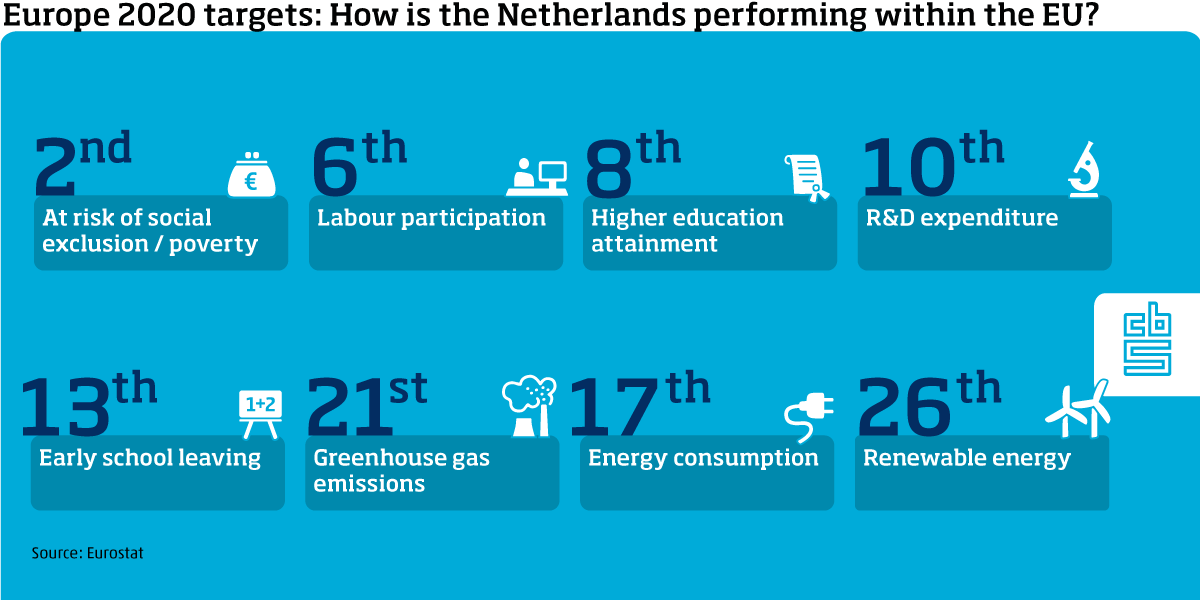Most EU targets not yet achieved by the Netherlands

In 2010, the government leaders of all the EU member states defined eight key targets in the areas of education, climate and energy, labour participation, research and development expenditure and poverty reduction. These objectives have been translated into national targets for each EU member state. An exception is the EU target of reducing the population share at risk of poverty or social exclusion, for which there is no national target. All EU heads of government have announced their ambition to reach these targets by the end of 2020.

Target of higher education achieved, early school leaving close
The Netherlands has reached an advanced stage in obtaining the education targets. Already in 2008, the share of highly educated people in the age group 30 to 34 years was at the agreed minimum of 40 percent. The percentage of tertiary education attainment has risen among women and people with a non-native background in particular. By 2015, the share of highly educated was greater among women than among men.
The percentage of early school leavers in the age group 18 to 24 years dropped to 8.2 percent in 2015, close to the agreed maximum of 8 percent. In 2015, 6.4 percent of girls and 9.9 percent of boys dropped out of education. Between 2005 and 2015, there was a decline by 0.6 percentage points among boys against 4.7 percentage points among girls.
Labour participation approaching target again after crisis
The percentage of employed people in the age group 20 tot 64 years declined by 1 percentage point in 2015 on 2014 to 76.4 percent, reducing the distance to the 80 percent target. The gap had widened during the years of economic crisis 2008 to 2014. Many employees lost their jobs during this crisis and the unemployment rate soared. In 2015, the number of employed people increased again.
Among the Dutch population, the proportion of people at risk of poverty or social exclusion increased from 14.9 percent in 2008 to 16.5 percent in 2014. This was mainly because in more households, the members had no or little paid work, due to rising unemployment figures over the crisis period.
Renewable energy consumption still far off
In 2015, a mere 5.8 percent of the energy consumed in the Netherlands came from renewable sources, while the target for the end of 2020 is 14 percent. This puts the Netherlands in the rearguard of the EU. For example, burning wood (a biomass fuel) is relatively uncommon in Dutch households, where natural gas is far more common. In addition, hardly any energy is generated from hydropower in the Netherlands. The frontrunners in the use of biomass for energy production are Sweden and Finland. The Netherlands is currently in 26th position in the EU. Only Malta and Luxembourg achieve lower scores. Available subsidies for renewable energy in the Netherlands are lower than in countries such as Germany and Denmark.
Exclusion and poverty risk low compared to rest of EU
In comparison with other EU member states, the Netherlands performs well in the areas of labour participation and risks at poverty or social exclusion. Apart from the Czech Republic, the Netherlands has relatively the lowest number of inhabitants at risk of poverty or social exclusion, in spite of the increase mentioned earlier. The Netherlands takes up 6th position in the EU where labour participation is concerned.
